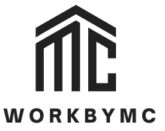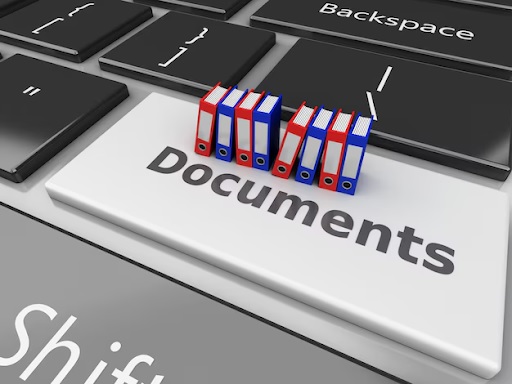Navigating customs clearance can often feel overwhelming, especially for businesses and individuals engaged in international trade. This process ensures that goods comply with the regulations of both the exporting and importing countries, preventing unnecessary delays and penalties. Having a thorough understanding of the essential documents required for customs clearance is crucial for a seamless experience. Click the link for more information: https://www.dhl.com/discover/en-pk/logistics-advice/import-export-advice/understanding-custom-duty-and-import-tax-rates
Customs clearance refers to the systematic process of ensuring that goods crossing international borders adhere to the applicable rules and regulations. This process involves verifying the shipment’s details, paying any applicable duties or taxes, and obtaining the necessary approvals for entry or exit. It plays a vital role in global trade, ensuring that transactions are compliant, efficient, and lawful.
Why Proper Documentation Matters
The role of documentation in customs clearance cannot be overstated. It ensures that shipments meet all regulatory requirements, minimizing the risk of delays, fines or confiscation. Proper documentation streamlines the approval process and facilitates smoother trade operations by providing customs authorities with all the necessary details about the shipment.
Key Documents for Customs Clearance
Several documents are central to the customs clearance process, each serving a specific purpose. Understanding these documents in detail is essential for ensuring compliance and avoiding costly mistakes.
Commercial Invoice
The commercial invoice acts as a key record of the transaction between the buyer and seller. It details the products being sold, their quantities, prices, and payment terms. Customs officials use this document to determine the value of goods for duty and tax calculations. Ensuring the accuracy of the commercial invoice is paramount, as discrepancies can lead to delays or disputes.
Packing List
A packing list provides a detailed inventory of the items in the shipment, including their dimensions, weight, and packaging details. While it is not a substitute for the commercial invoice, it complements it by offering additional information about the shipment’s contents. This document helps customs officials verify the shipment’s compliance with declared details.
Bill of Lading
The bill of lading serves multiple purposes. It is a receipt for the shipped goods, a contract between the shipper and the carrier and evidence of ownership of the goods during transit. This document ensures that goods are transported under agreed terms and provides legal protection to the parties involved.
Certificate of Origin
The certificate of origin certifies where the goods were manufactured. This document is particularly important for determining whether the shipment qualifies for preferential trade agreements, which can reduce or eliminate tariffs. It also helps ensure compliance with the importing country’s regulations.
Import/Export Declaration
The import/export declaration provides customs authorities with detailed information about the shipment. It includes descriptions of the goods, their value, origin and intended use. This declaration is crucial for assessing duties, and taxes, and ensuring adherence to trade regulations.
Inspection Certification
In many cases, an inspection certification is required to verify that the goods meet specific quality, safety, or regulatory standards. This document is often issued by authorized agencies or third-party inspectors and is particularly important for shipments involving food, pharmaceuticals, or industrial equipment.
Licenses and Permits
Certain goods require specific licenses or permits to be imported or exported. Examples include agricultural products, chemicals or goods subject to export controls. Ensuring that all required licenses are in place is critical to avoiding delays or legal complications during customs clearance.
Common Errors in Customs Documentation
Errors in documentation can cause significant disruptions in the customs clearance process. One common mistake is providing incomplete or incorrect information on essential documents. For example, inaccuracies in the commercial invoice or import/export declaration can lead to fines or rejection of the shipment.
Another frequent issue is the misclassification of goods. Goods must be correctly categorized according to the Harmonized System (HS) codes, which are used globally to classify traded products. Misclassification can result in incorrect duty calculations and compliance issues.
Incorrect value declaration is another critical mistake. Declaring an inaccurate value for the goods can lead to penalties or delays, as customs authorities may suspect attempts to evade duties. It is vital to ensure that the declared value matches the transaction’s actual terms and conditions.
Finally, a lack of understanding of customs regulations often leads to non-compliance. Regulations can vary significantly between countries and may change frequently. Staying informed and updated is essential for avoiding unnecessary complications.
Ensuring a Smooth Customs Clearance Process
To facilitate a hassle-free customs clearance experience, several best practices can be followed. Engaging a knowledgeable customs broker is one of the most effective ways to navigate the complexities of international trade. A skilled broker can provide valuable guidance, ensure compliance and handle the documentation process efficiently.
Another crucial step is maintaining accurate and complete documentation. This includes verifying all details on essential documents, such as the commercial invoice, packing list and import/export declaration to ensure they align with the shipment’s contents and terms.
Staying informed about changes in customs regulations is equally important. Governments frequently update trade policies and requirements and keeping abreast of these changes can prevent compliance issues. Subscribing to updates from trade authorities or consulting with industry experts can be helpful in this regard.
Proper classification of goods is also essential for smooth customs clearance. Assigning the correct HS codes to products ensures accurate duty calculations and compliance with regulatory requirements. This step is critical for avoiding disputes or delays during the clearance process.
Final Thoughts on Customs Clearance
Understanding the essential documents required for customs clearance is vital for ensuring compliance, minimizing delays and facilitating smooth international trade operations. From the commercial invoice and packing list to the bill of lading and certificate of origin, each document plays a critical role in the process.
Avoiding common mistakes, such as misclassification of goods or incorrect value declarations and staying informed about regulatory changes can make a significant difference in the efficiency of the customs clearance process. Engaging experienced professionals, such as customs brokers and adhering to best practices further enhance the likelihood of success.
By prioritizing accurate and complete documentation, businesses and individuals can navigate the complexities of customs clearance with confidence, ensuring their shipments reach their destination without unnecessary complications.

